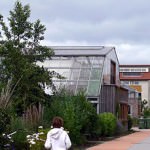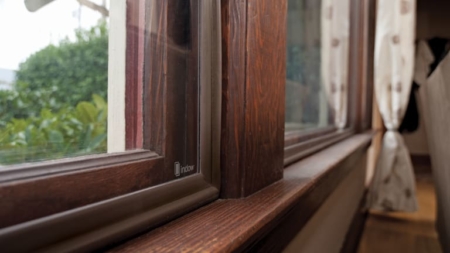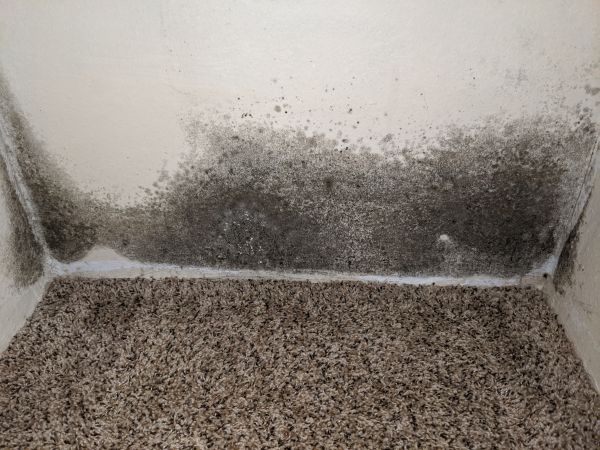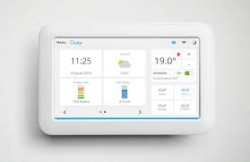Neighborhoods are more than just groups of buildings. They are where people live, work, play, shop, socialize, and learn. There are neighborhoods called ecodistricts that have this in mind while also considering resource efficiency and environmental sustainability as well as promoting health and well-being. According to EcoDistricts (formerly the Portland Sustainability Institute), these areas are highly integrated and vibrant neighborhoods that engage residents in promoting human connections. 
Ecodistricts have the potential to create green cities from the neighborhood up. Examples include five ecodistricts in Portland: South of Market (PSU/downtown area), Lloyd District, Lents, Gateway, and South Waterfront. Ecodistricts are also present elsewhere in the US, such as the North Park neighborhood of San Diego, and internationally, Eva-Lanxmeer (Netherlands), Beddington Zero Energy Development aka BedZED (London), and the low-carbon project in Jono (Japan).
There are eight areas of focus for ecodistricts:
- Water: This can include cisterns, storm water management, and water reuse. Water conservation efforts may be utilized, such as installation of low flow faucets and toilets. Pettygrove Park in the South of Market (SoMa) ecodistrict has drought resistant turf grass and uses high efficiency irrigation. In addition, some restaurants will only provide water upon request.

Street in BedZED
- Health & Well-being: Safe, connected streets and other urban design elements promote walkability and bike riding. Strategies may be utilized to improve outdoor and indoor air quality, such as proper building ventilation, non-toxic cleaning products, and carpool incentives. Accessing healthy, local, and affordable food, such as Farmers Markets, also enhances ecodistricts.
- Equitable Development: Promotes opportunities and equality among residents and business community members. This can mean access to neighborhood decision-making processes, job and training opportunities in the area, and fair distribution of benefits and burdens of development. For example, the Eva-Lanxmeer (Netherlands) ecodistrict of 240 green residential homes promotes the constant participation of residents. While it was still in the project phase, future inhabitants helped to design and plan this ecodistrict.
- Energy: Energy reduction and conservation measures may be used, such as natural lighting in buildings, ecoroofs, and task lighting instead of bright overhead lighting. This can include renewable energy, such as solar panels. An example of an energy reduction effort is the Kilowatt Crackdown that took place in the SoMa ecodistrict. This was a challenge to save energy and reduce operating costs in buildings. Owners and tenants received technical assistance to benchmark energy use, analyze savings opportunities, and identify potential building performance improvements. The BedZED ecodistrict uses only energy from renewable sources generated on site. There are 8,360 square feet of solar panels in the community. Homes have high thermal insulation and face south to take advantage of solar gain.

Lovejoy Fountain
- Community Identity: Gatherings and cultural events that are free and accessible to the community. Beautiful, clean, and safe spaces that promote interaction among community members and visitors. Governance with the leadership and capacity to act on behalf of the neighborhood. SoMa is looking at ways to encourage people to use the Lovejoy Fountain park as a gathering place for events, music, and performances.

Eva-Lanxmeer Greenhouse
- Habitat & Ecosystem Function: The balance between natural and human needs should not compromise the health of flora and fauna nor of air, soils, and watersheds. This can mean having an abundance of native vegetation, strategies to protect and enhance watersheds, and urban infrastructure design that eliminates human-made hazards to wildlife.

North Park recycling
- Materials Management: Reduce the consumption of and eliminate the negative impacts of materials. Use strategies for waste prevention and elimination of practices that produce waste. Use locally produce(d items. Reuse materials or use recycled materials. Recycle or donate used materials. For example, some restaurants in the North Park ecodistrict (San Diego) will only provide straws for drinks when requested. North Park also has recycling receptacles in various places in public areas. During Earth Week in April 2014, several coffee shops in SoMa offered a greater discount (50 cent discount on drink purchases compared to the usual 10 cent discount) for bringing in a reusable mug. In BedZED, building materials are from renewable or recycled sources from within 50 miles of the area of minimize the energy required for materials transport.
- Access & Mobility: This includes clean and easy access to transportation. Bike racks, bike lanes, bus stops, and safe sidewalks for walking help to reduce overall dependency on cars among community members. In BedZED, community members are encouraged to walk, ride bicyles, or utilize the easily accessible public buses and trains. Parking is limited, but a car sharing program is available for when cars are needed.
Ecodistricts are green neighborhoods with a comprehensive strategy to accelerate sustainable development at the neighborhood scale by integrating building and infrastructure projects with community and individual action. As the EcoDistrict site states, ecodistricts are “small enough to innovate quickly and big enough to have a meaningful impact”.




